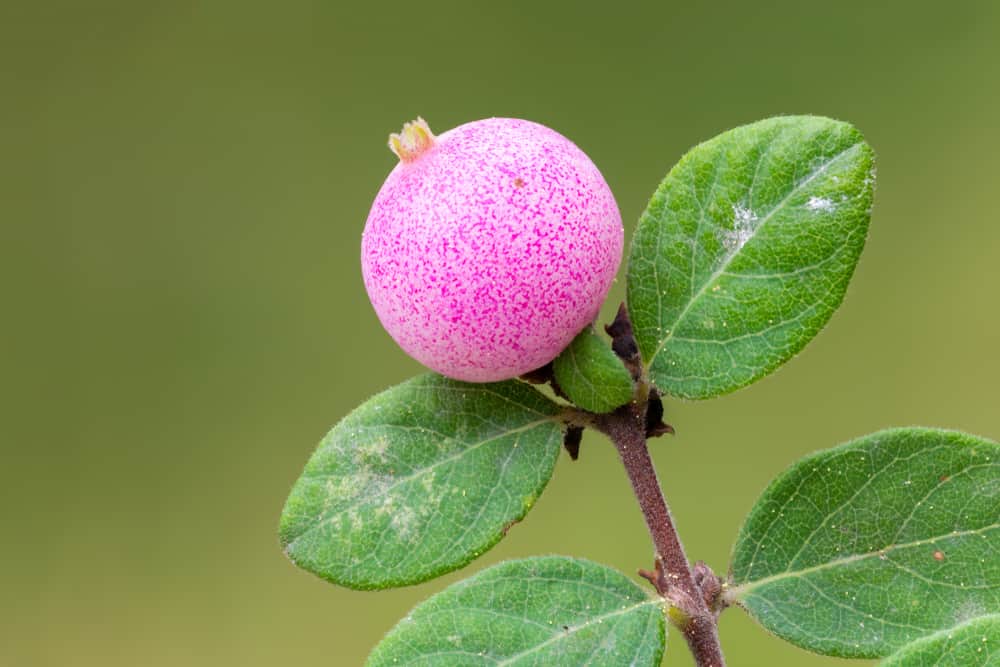
It is surprisingly easy to get inspired when designing and planting garden areas in total shade. This is a wonderful list of interesting trees, shrubs, perennials, and tender perennials that will make your total shade garden a wonderful place to visit.
You’ll be setting up a seating area or hammock in no time for sipping cool drinks and taking a break from the hotter, sun-exposed areas of the backyard.
The inspiration comes when we let go of some of those pretty little plant ideas that supposedly thrive and bloom in the shade but do actually require some sunlight. We try and try. They never bloom. They get leggy and unsightly. And here we are again, avoiding our garden areas in total shade.
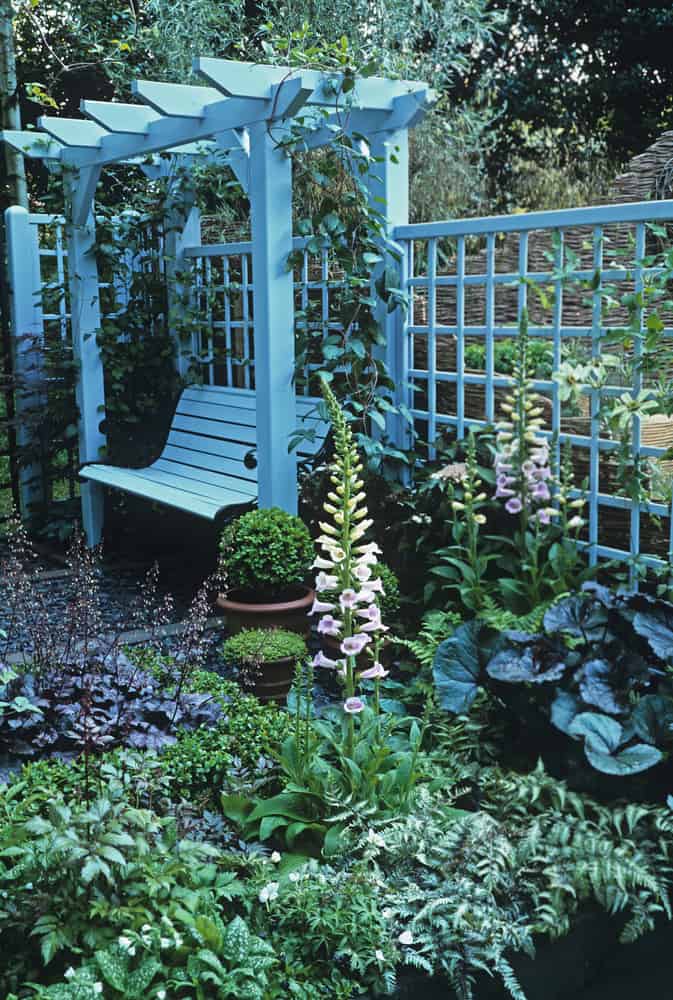
The Secret of Success; Focus on the Foliage
Plants are more than their flowers. True full-shade plants have had to be creative to survive. They must maximize their leaf surface to be able to absorb any bits of light they can. The result: full-shade plants have wonderfully interesting leaf shapes, textures, and colors. This gives shaded areas tons of potential for interesting plants.
What Is Total Shade?
Partially shaded areas receive some direct daylight. An east facing garden that receives morning sun but is protected from the heat of the day is considered partial shade. Or under sparsely branched trees which gives the underplanting consistent dappled shade is also partial shade.
A totally shady area receives no direct sunlight at all. The north side of fences, buildings, or other structure or the understory plants of a heavily treed area as in a dense forest would be considered full-shade areas.
No Two Shades are the Same
Another huge consideration we need to think about to ensure our plants will look gorgeous in the shade is other climate conditions.
Plants that may thrive in deep shade in the cool, moist Pacific Northwest may have different requirement than shade plants planted in the hot, dry shade of Arizona, for example.
Create Your Own Microclimate
For the desired outcome, we may need to create our own microclimate. An example of this would be in the humid, cool, damp heavily shaded areas of the Pacific Northwest, plants may need to have more air circulation and excellent drainage established as water does not evaporate easily here. This is to prohibit any diseases such as powdery mildew that can fester without good drainage and air circulation.
Similarly, extra moisture will be hard to maintain in hot, dry areas, even in the shade, so add in extra moisture-retaining soils, automatic watering systems, a generous watering schedule, or even a water feature to increase the humidity for shade-loving plants.
Total Shade Trees
1. Flowering Dogwood (Cornus florida)
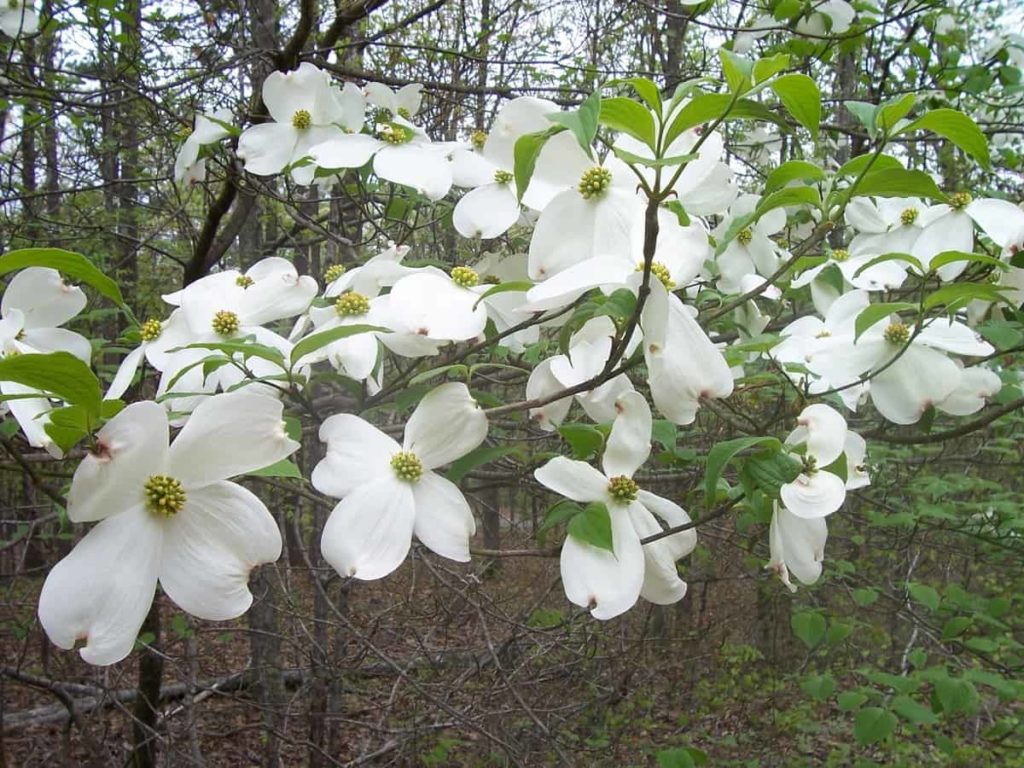
Stand Out Feature: Stunning 3-inch flowers and wonderful bright red fall foliage.
Size: 12 to 36 feet tall.
Climate Zones: 5 to 9.
2. Japanese Maple (Acer palmatum)
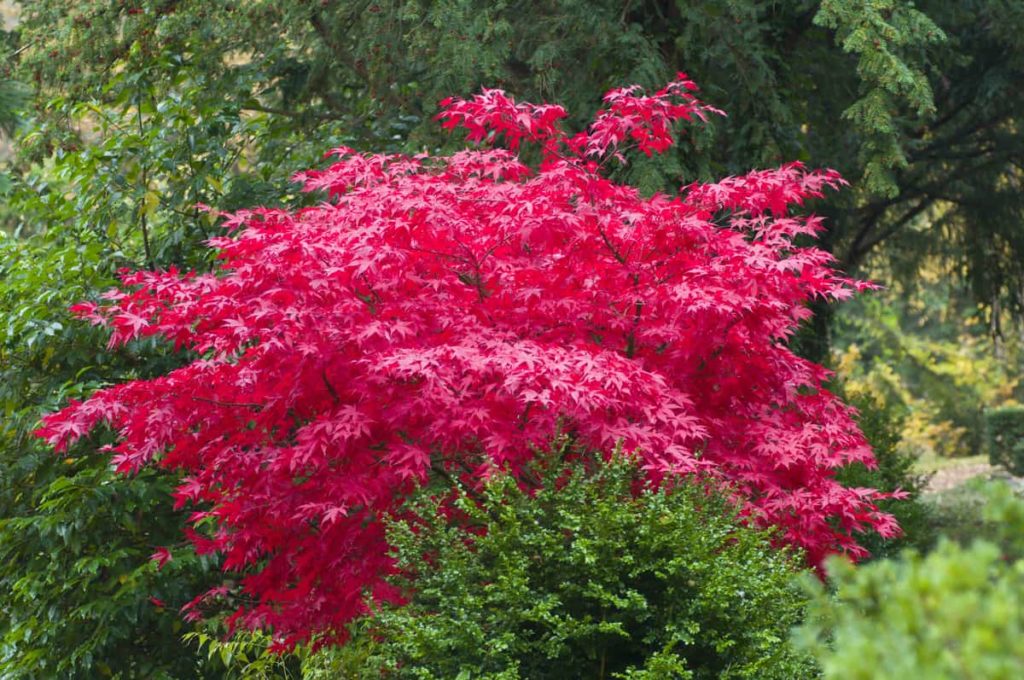
Stand Out Feature: Deeply cut maple leaves in purple, pink, red, and green color varieties on graceful branches.
Size: 15 to 35 feet tall and wide.
Climate Zones: 5 to 8.
3. Western Yew (Taxus brevifolia)
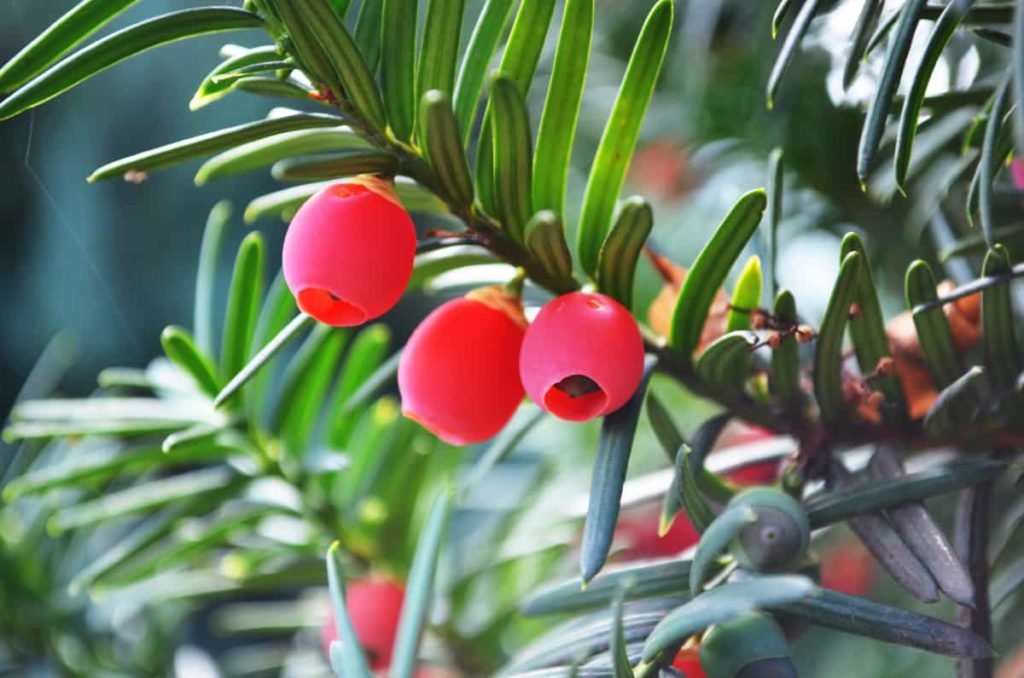
Stand Out Feature: Evergreen with bright red berries. Plant is toxic.
Size: 3 to 30 feet. Slow growing reaching 5 to 10 feet in 10 years. Can have a single trunk or can have a low-growing spreading habit.
Climate Zones: Performs best in zone 4.
Total Shade Shrubs
4. Mountain Laurel (Kalmia latifolia)
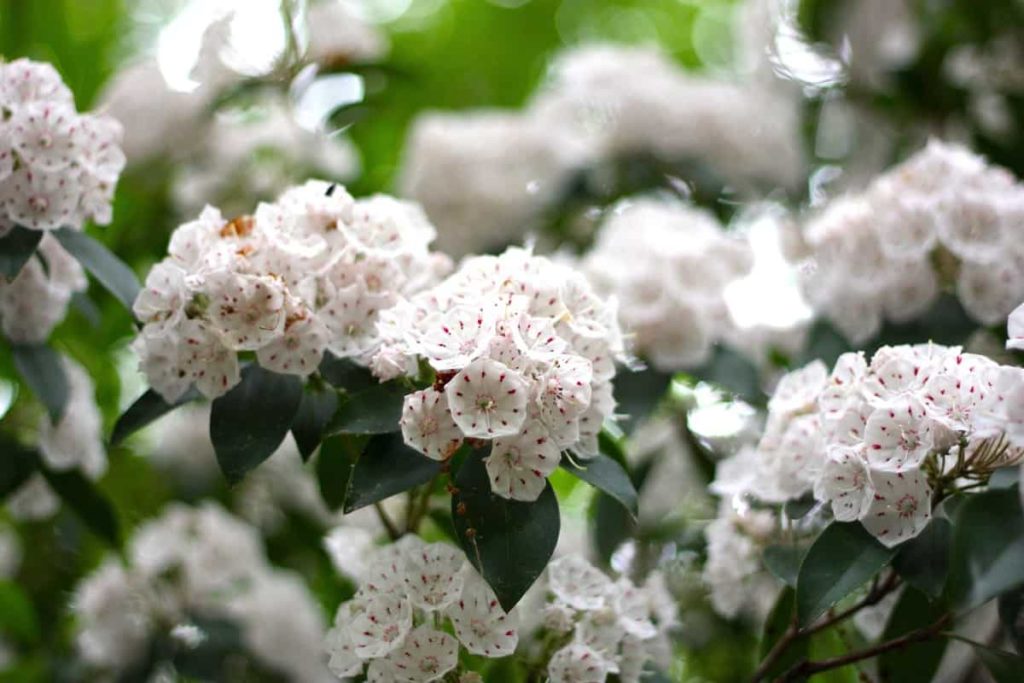
Stand Out Feature: Broadleaf evergreen with rounded, spreading form. Blooms are white to pink, large and bell-shaped in early summer. Plant is toxic.
Size: 12 to 20 foot tall with multiple stems. Can also have a single trunk and take on a tree-like form.
Climate Zones: 5 to 9.
5. Virginia Sweetspire (Itea virginica)
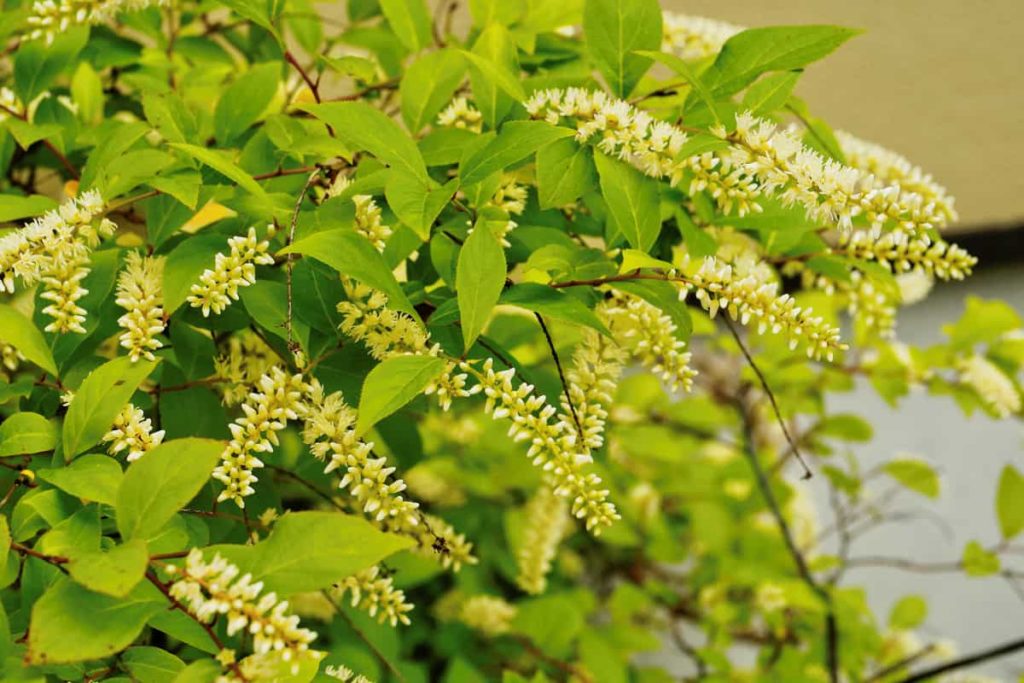
Stand Out Feature: Fragrant, delicate, arching flower spires in spring and outstanding fall foliage.
Size: Grows 3 to 6 feet tall and wide.
Climate Zones: 5 to 9.
6. Coralberry (Symphoricarpos orbiculatus)
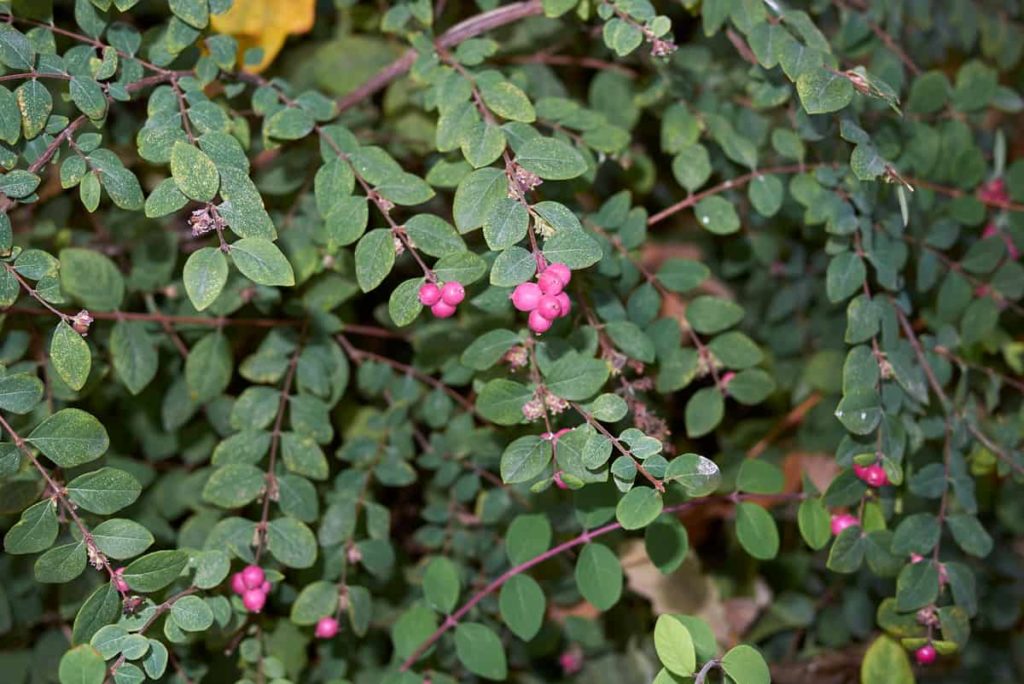
Stand Out Feature: Small, gracefully mounded shrub with berries that persist through winter after leaf shed.
Size: 2 to5 feet tall, spreading 4 to 8 feet wide.
Climate Zones: 2 to 7.
7. Dwarf European Cranberry (Viburnum opulus var. opulus ‘Nanum’)
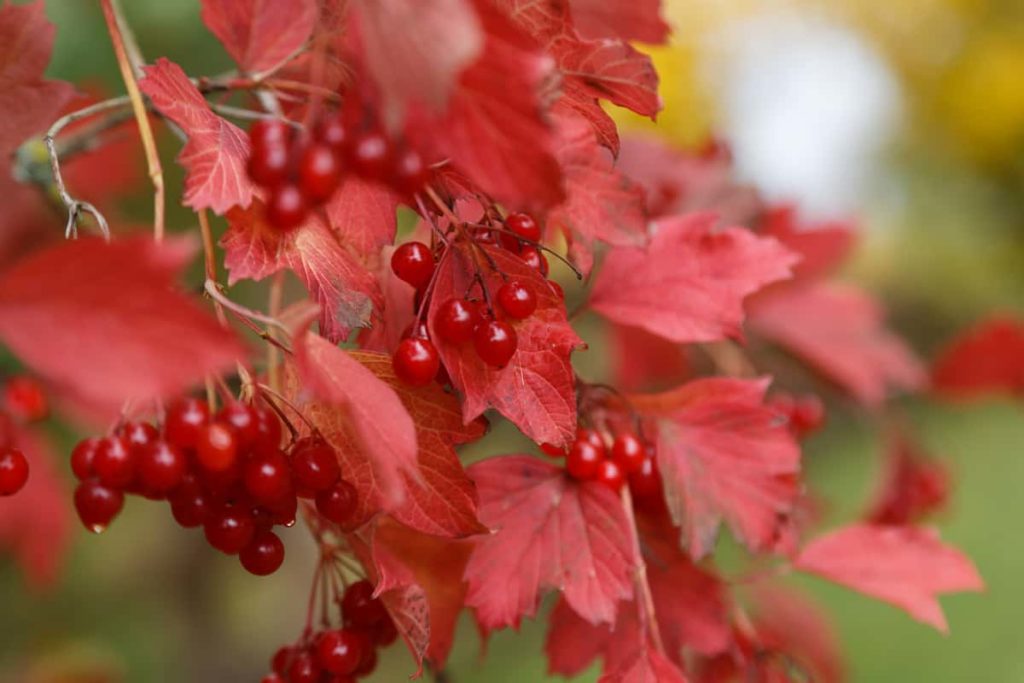
Stand Out Feature: Glossy, deeply lobed leaves turn bright purple red in fall on this compact, densely branched shrub.
Size: 2 feet tall by 3 feet wide.
Climate Zones: 3 to 8.
8. Flowering Raspberry (Rubus odoratus)
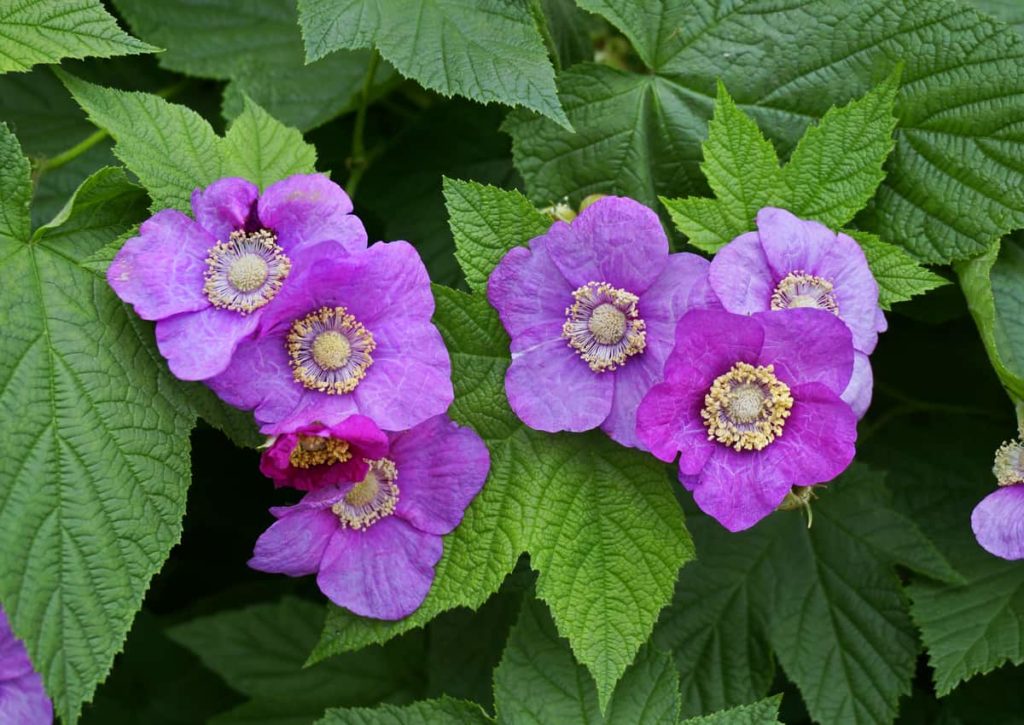
Stand Out Feature: Thicket-forming, arching deciduous, thornless raspberry which blooms in summer, great for pollinators. Leaves are pale yellow in fall.
Size: 5 to 8 feet tall, spreading up to 12 feet wide.
Climate Zones: 3 to 8.
Total Shade Perennials
9. Hosta
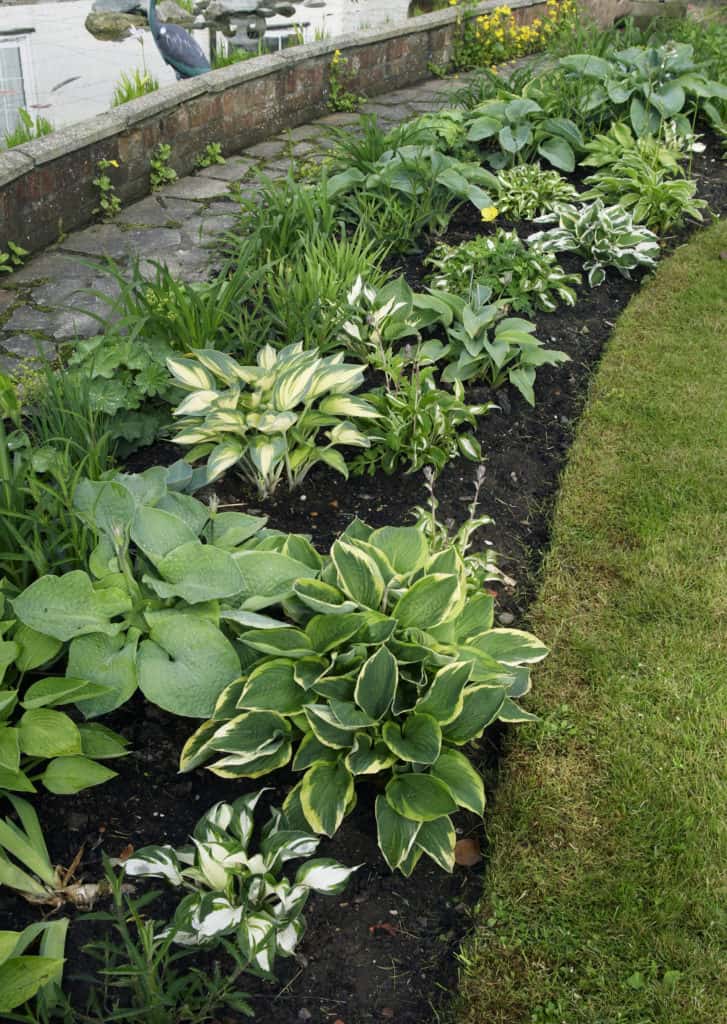
Stand Out Feature: Terrific variety of foliage shapes, color variations, stripes, and variegated margins in this trusted, long-lived, easy-going, shade-loving perennial.
Size: Hosta possibilities are relatively limitless with dwarf varieties only 2 inches tall, with giant varieties growing over 5 feet tall and wide. Depending on the source, there are up to 45 species of Hosta, some with leaves reaching over 1 ½ feet long.
Climate Zones: 3 to 9.
10. Ostrich Fern (Matteucia struthiopteris)
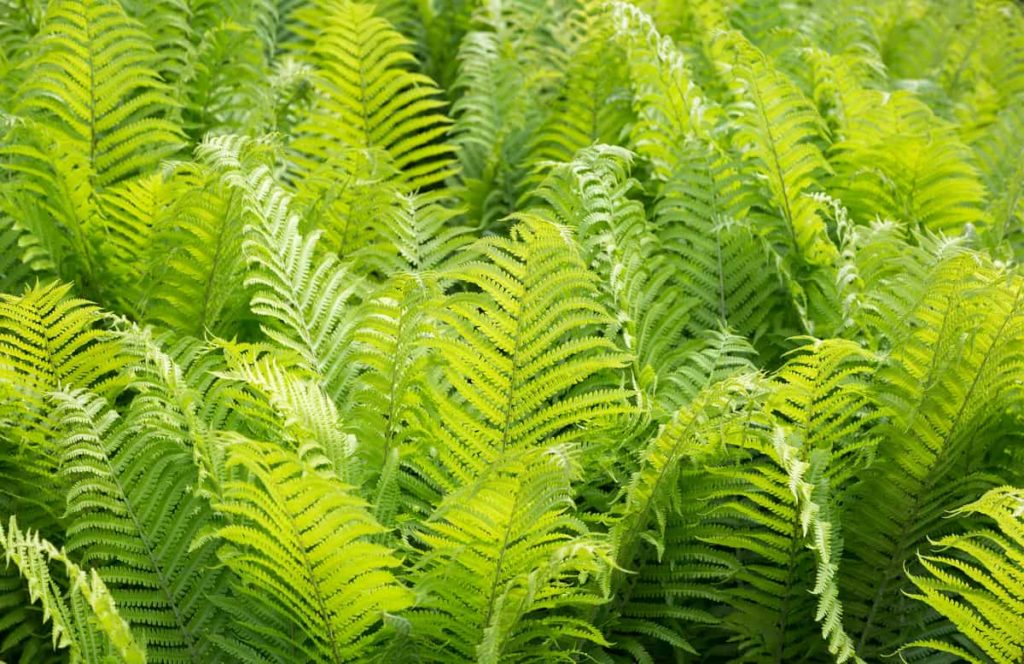
Stand Out Feature: Upright, feathery, elegant plumes of soft bright green, finely dissected foliage which are tapered at the top and bottom.
Size: Clump-forming plants grow 2 to 3 feet tall but can be found up to 6 feet high in perfect conditions.
Climate Zones: 3 to 7.
11. Lily of the Valley (Convallaria majalis)
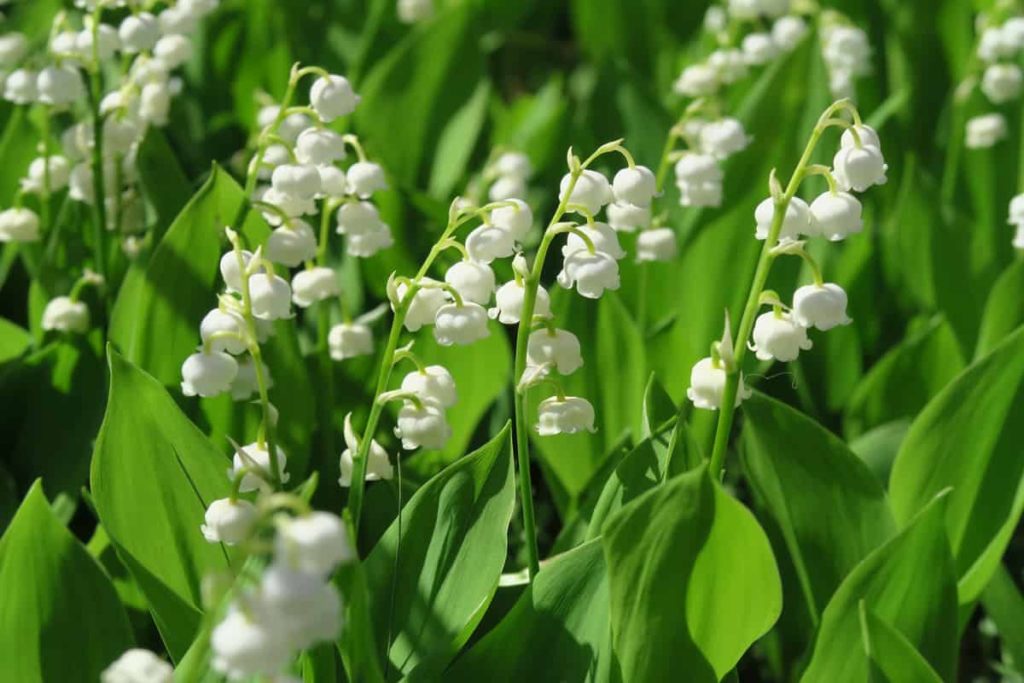
Stand Out Feature: Tiny, bell-shaped flower clusters with bursts of delicious fragrance in spring which become bright red (poisonous) berries in summer. Plants create lush, low-maintenance, ground-covering colonies.
Size: 6 to 12 inches tall. Limitless spread in the perfect conditions.
Climate Zones: 3 to 8.
12. Dead Nettle (Lamium)
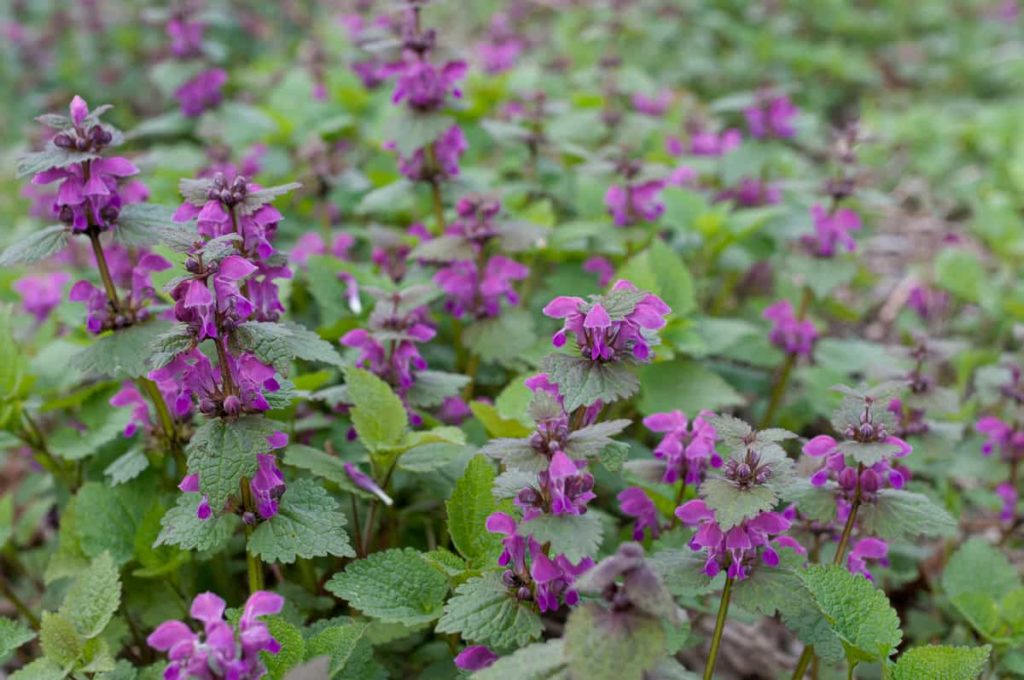
Stand Out Feature: Interesting, heart-shaped leaves that can be mottled, variegated, or have contrasting markings. A fast-growing perennial ground cover in a wide variety of available leaf colors.
Size: Spreads indefinitely in prime conditions to a high of only 5 to 8 inches.
Climate Zones: 2 to 9.
Total Shade Tender Perennials/Annuals
13. Elephant Ears (Colocasia)
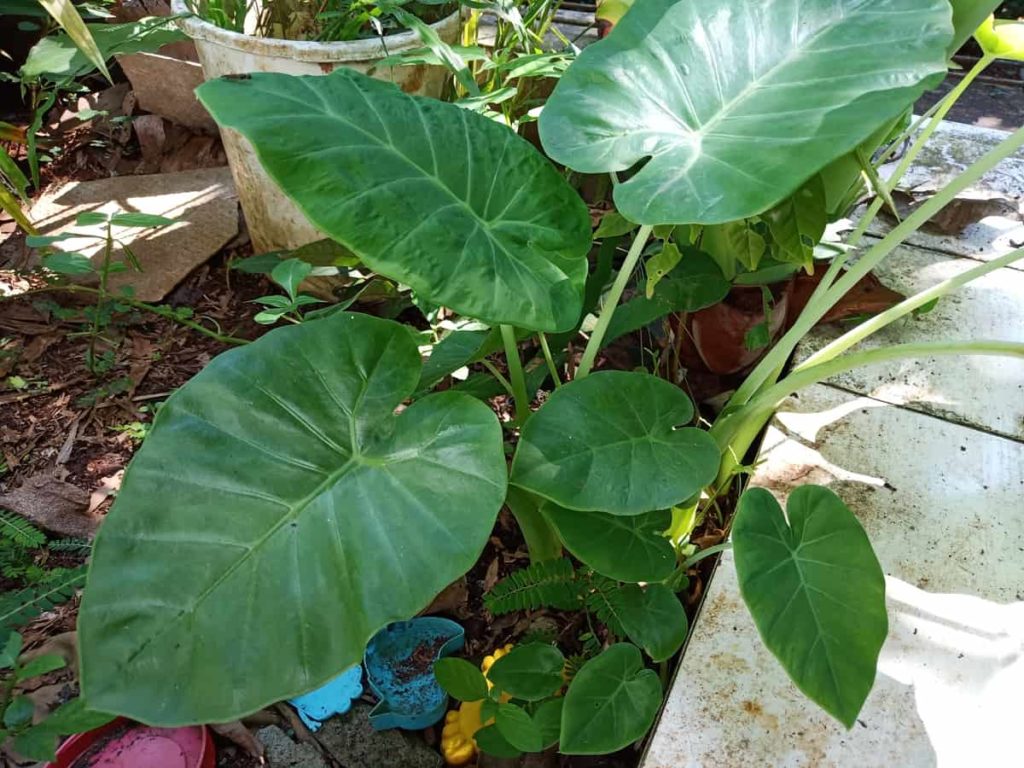
Stand Out Feature: Giant, heart-shaped leaves create a tropical flair and thrive in or near water features. Available in many sizes and colors, often with contrasting-colored veins and stems.
Size: Usually between 3 to 5 feet tall and wide but some varieties grow over 9 feet. In the tropical climates they are from, some species have been found to be over 20 feet tall.
Climate Zones: A tender perennial, zones 7 to 12. Tubers can be lifted and stored much like dahlias to be replanted in the spring in colder climates.
14. Primrose (Primula)
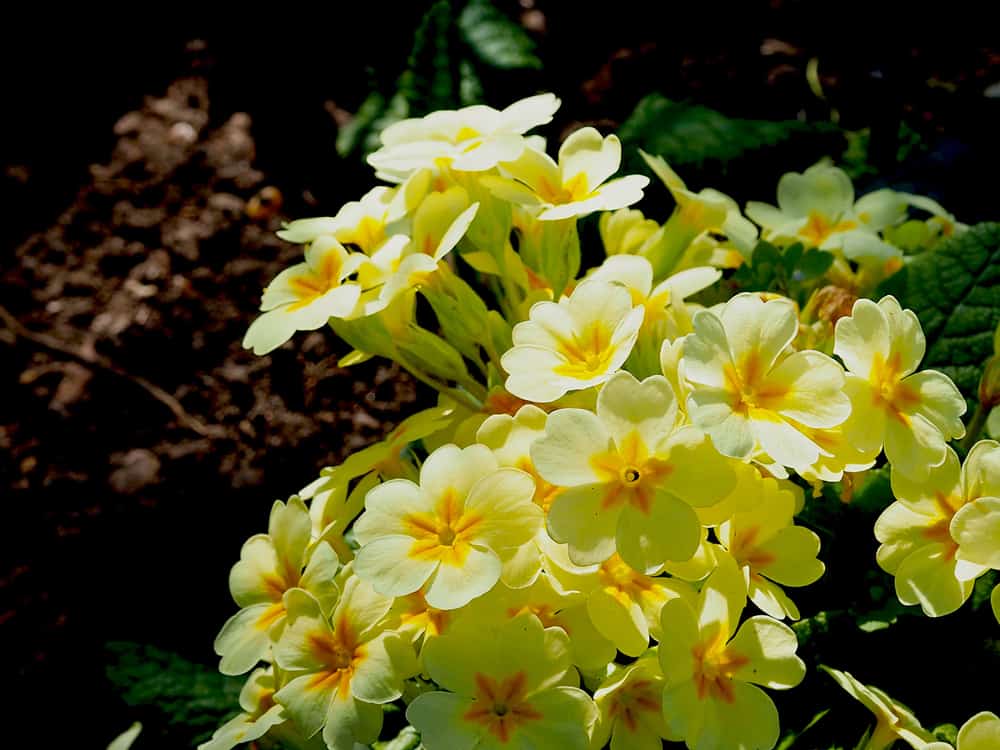
Stand Out Feature: With over 400 species in this genus of tiny flowering plants, primroses are the focus of many an obsession. I may be sneaking it onto this list, as some will tolerate a little sunshine, but many species and varieties will perform and tolerate full-shade conditions. They grow only about 6 inches tall in a basal rosette of softly wrinkly leaves which frame the center cluster of flowers reminiscent of the flowers we all drew as children.
Size: 4 to 12 inches tall.
Climate Zones: 4 to 8. Because they come up so early in the spring, early spring frosts can damage plants and flowering parts. If left outside in cold climates, they need protection from late fall and early spring freezing conditions. Mulch well, keep moist, and uncover in good weather.
15. Coleus (Solenostemon)
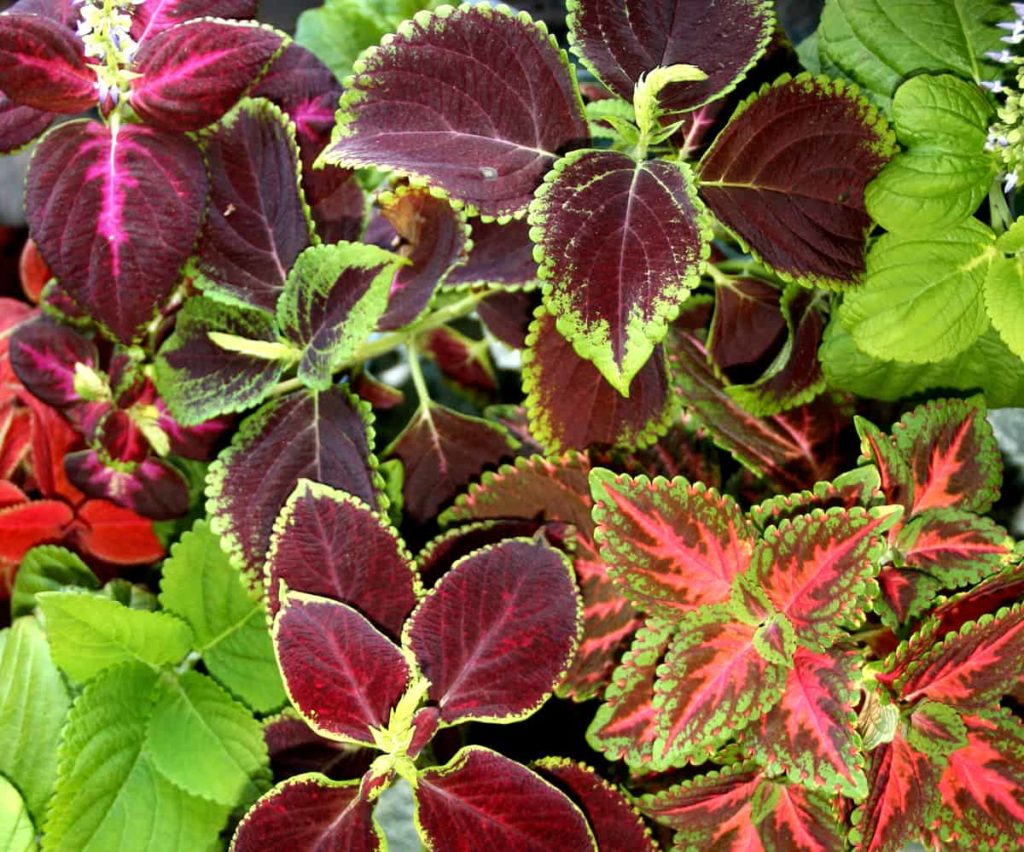
Stand Out Feature: With wonderfully showy and interesting colorful foliage, new varieties are showing up every year of this versatile, shade-loving, tender perennial evergreen plant.Great for filling in around young shade-loving perennials while they grow to maturity.
Size: 18 to 30 inches tall, spreading up to 20 inches.
Climate Zones: Tender perennial in zones 10 to 12. May be brought inside to overwinter for the following spring.
Shades of Inspiration
As with any garden adventure, we are only scratching the surface on what is possible in the totally shady areas of the backyard. Grown in layers of trees, shrubs, perennials, groundcovers, and tender perennial annuals to fill in any remaining space, even the darkest corners can be brought to colorful, vibrant life.
